Hussam al-Mahmoud | Yamen Moghrabi | Hassan Ibrahim
On October 7, 2023, the world and the Middle East awoke to the drums of war beating in the Gaza Strip. Over time, it turned into a reality that American efforts, Qatari and Egyptian mediation, condemnations, statements, summits, and conferences could not stop.
While Israel continues its war in the besieged Gaza Strip, attention is turning towards the potential outbreak of another war. The engagement of the Lebanese Hezbollah in the Gaza war by opening a “support front” manifested in daily skirmishes and limited mutual shelling with Israel. Hezbollah conditions the cessation of fire in Gaza to halt its actions, pushing Israel to hint at another war to silence the northern front.
Hezbollah clings to its condition for a ceasefire in Gaza, a global demand unmet by the agreement between Hamas and Israel to cease fighting. Israel continues its threats of heading south to Lebanon, and the mediation led by Washington remains stalled, yielding no tangible results on the ground.
Although the Syrian regime’s stance in the first war was limited to condemnation, the new potential front might impose different realities. The true position of the Syrian regime in case of Hezbollah’s war outbreak remains uncertain.
In this context, Enab Baladi discusses with researchers and political analysts the options of the Syrian regime in dealing with this new regional threat, the roles that could be assigned to it in the event of a war, the nature of the relationship with Hezbollah, the potential impacts of the conflict on Syria, and the limits that can be reached.
An unpromising outlook
Calls from several countries, such as Kuwait, Canada, and then Jordan, for their citizens to avoid traveling to Lebanon have signaled a heightened risk, revealing the potential outlines of an imminent war. Israel continues to mobilize its forces on Lebanon’s southern borders while simultaneously preferring diplomatic solutions, as per statements.
Among the notable statements is that of Israeli Defense Minister Yoav Gallant, who, on June 26, asserted that Israel could return Lebanon to the “Stone Age” in any war with Hezbollah, clarifying that his government prefers the diplomatic solution sought by the United States.
Washington is also pushing for a Qatari mediation role by sending a Qatari envoy to Lebanon to meet leaders of Hezbollah, the Amal Movement, and security officials to explore the possibility of reducing tensions on the southern front. The visit is coordinated with the US administration, which had requested Doha’s efforts in this regard after initial discussions had begun with the political assistant to the Speaker of the Lebanese Parliament, Ali Hassan Khalil, who visited Qatar twice recently.
The US administration hopes that Qatari pressure on Hamas to accept the American proposal to end the war in Gaza, along with a larger Qatari intervention in Lebanese affairs, particularly with Hezbollah, could bring about a breakthrough that prevents an all-out war, according to the Lebanese newspaper Al-Akhbar.
According to the newspaper on June 27, most Western and especially European embassies have conducted surveys along the Lebanese coast and explored sea ports that could be used to evacuate their citizens in case the war expands in the south.
Amid and after these movements, mutual shelling continues between Hezbollah and Israel, causing destruction in Israeli military sites near the border. In retaliation, Israel targets cars and specific figures from Hezbollah, the most notable being senior leader Taleb Abdullah, assassinated by Israel on June 12. Hezbollah responded with about 160 shells, some of which the Israeli army admitted caused fires.
Hezbollah’s Secretary-General, Hassan Nasrallah, has hinted in various ways about responses if Israel heads towards open war with Lebanon. On June 19, Nasrallah stated, “The enemy should expect us from air, land, and sea,” stressing that if war is imposed on Lebanon, “the resistance will fight without rules, constraints, or limits.”
Speaking during the memorial ceremony for leader Taleb Abdullah, Nasrallah emphasized that ceasefires on the Lebanese, Yemeni, and Iraqi fronts hinge solely on halting the war on Gaza and its people.
Despite American efforts, French push, Qatari intervention, and Israeli statements moving in two directions, the ongoing escalation at the borders has not shifted Hezbollah’s stance on ceasefire nor hastened Israel’s reach for a ceasefire in Gaza. This leaves the door wide open for another war, with questions lingering about the Syrian regime’s position on the potential conflict after its absence from the current one in Gaza.
Expected form of participation?
The regime’s current stance towards Hamas and its battles can be interpreted in various ways, considering the prevailing disagreements over the stance on the Syrian revolution that began in 2011. The regime appears unable to move militarily under its current conditions, besides leaks of Emirati warnings to avoid participation.
The American website “AXIOS” reported in October 2023 that unnamed Emirati officials had sent messages to senior Syrian officials, also unnamed, advising against intervening in the conflict amid international concerns over the war’s extension and escalation into a regional conflict.
The situation might differ regarding Hezbollah, given the nature of their relationship and direct involvement in the Syrian war to protect al-Assad, alongside potential Iranian pressures.
Ahmed Atawna, Director of the Vision Center for Political Development, mentioned three considerations if the situation in Lebanon explodes between Hezbollah and Israel. First, the nature of the relationship with Iran and Hezbollah differs from the regime’s ties with Hamas, as both Iran and Hezbollah participated in the Syrian war alongside the regime directly. This indicates a strong alliance.
Additionally, Iranian and Iraqi militias, supported by Tehran, and Hezbollah forces in Syria are under Iranian control. Hence, Syria as a geography, regime, and country will be present if the situation in Lebanon escalates.
This equation also involves Israel not only Iran and its allies in the region. Israeli forces might expand their bombing and targeting scope to include Syrian territories, considering the existence of these forces on Syrian grounds and Syria’s role as a logistical ground supply path, opening wide intervention possibilities for these forces in the war, according to Atawna.
In an analysis published by the Israeli newspaper Jerusalem Post on June 27, which included three Israeli political analysts, some militias on Syrian territories might join any upcoming battle but not significantly.
Iran has established a strong presence in Syria, a reality that will persist regardless of whether the war breaks out or not, according to political analyst Eyal Zisser. On the other hand, analyst Omer Dostri suggested Israel should prepare its domestic audience for a wide-scale war in Lebanon, including fully occupying its south and destroying Beirut entirely.
The Syrian regime previously engaged in battles in Lebanon during the civil war (1975-1990) against various local forces and Israel during its invasion of Beirut in 1982. In 2006, 24 years later, the regime’s prime ally in Lebanon, Hezbollah, waged a 33-day war known as the “July War,” which still dictates mutual shelling rules between Israel and Hezbollah based on the UN Resolution “1701.”
Atawna added that Israel’s war against Hezbollah in Lebanon carries escalation potential towards a regional war that might involve Iran itself. It is also likely that militias in Iraq and Syria, and the Houthis in Yemen, might join the war. Thus, it is improbable that Syria will be immune to intensified Israeli attacks.
Throughout these phases, the Syrian regime participated differently: militarily in the 1980s, logistically by transporting weapons and equipment between Iran and Hezbollah, and by hosting Lebanese refugees during the 2006 war, which saw a warm popular reception.
These considerations explain potential reasons for regime movement or, at least, indifference to military actions by its allies, reflecting the nature of relations between Hezbollah and the Syrian regime, as highlighted in a 2019 report by the Malcolm H. Kerr Carnegie Middle East Center by journalist and researcher Mohannad Haj Ali.
According to the report, the connections between Syria and Hezbollah are at the core of Syrian-Iranian relations. The ties between Syria and Hezbollah represent the dynamics between Damascus and Tehran, while the relations between them played a crucial role in Hezbollah’s rise in Lebanon. The Syrian regime allowed hundreds of Iranian Revolutionary Guard Corps (IRGC) into Lebanon in 1982 to help establish the party.
The analysis indicates that after Hezbollah entered Syria in 2012, it helped establish parallel institutions similar to pro-regime militias, formed independent armed forces within a weak state, and had the opportunity to expand its military, political, and ideological influence within Syria.
Options after “viewing”
Although the Syrian regime may choose or be forced to participate in a seemingly imminent war, its participation does not necessarily have to take a solely military form, especially considering the long war its forces have fought for over 12 years.
In addition to the logistical support that the regime might provide, being at least an overland corridor for transporting human elements or military shipments, it may also help in receiving Lebanese who are expected to flee due to the battles.
Currently, there has been no noticeable massive displacement from southern Lebanon affected by the escalation with Israel to Syria, as most displaced people are moving to other areas within Lebanon. As of June 11, according to the United Nations Office for the Coordination of Humanitarian Affairs (OCHA), the number of displaced people has reached 95,228, 50% of whom are women.
Previously, in a television interview broadcast on the Emirati channel “Sky News Arabia,” al-Assad indicated that the conditions in his controlled areas do not allow for the return of Syrian refugees, due to the lack of basic services like water, electricity, and schools, as well as the destruction of infrastructure.
The situation might differ concerning a potential displacement from Lebanon. Geographically, Lebanon is bordered by occupied Palestine to the south, the Mediterranean Sea to the west, and Syria to the north and east. Politically, al-Assad might be forced to receive the displaced, at least at the request of Iran or Hezbollah.
According to Ahmed Atawna, if conditions are favorable, the Syrian regime will open the door for the displaced due to its strong relationship with Hezbollah. It won’t appear as “saving face” due to its inability to participate militarily but rather because the nature of the relationship imposes it. The alliance between the three parties—Tehran, Damascus, and southern Lebanon—is genuine and based on mutual cooperation and conviction, according to his view.
Although leaks in October 2023 indicated Israeli warnings conveyed to al-Assad by the UAE against military participation in the war on Gaza, and the regime’s conditions at the time prevented its participation, the situation might not recur if circumstances explode in Lebanon. Recently, Hassan Nasrallah, the Secretary-General of Hezbollah, stated that an upcoming war with Israel would have no ceiling or constraints if it breaks out.
Atawna explained that the behavioral change might not only include the Syrian regime but also various parties in Iraq, Syria, and other places. A broad targeting of the party by Israel means it might expand its operations against the entire alliance, not just in Lebanon, leading to subsequent targets in different regions. All parties then will be concerned with “curbing Israel,” resulting in a more serious and direct involvement in the conflict.
Maan Talaa, a researcher at the Omran Center for Strategic Studies, sees that the regime faces different challenges and settlements, some related to Turkey, others to the Arabs, and also its military and security structure. This makes it seem self-enclosed and reluctant to interact regionally even with what is happening on the Syrian ground, ignoring the clashes between the Syrian Democratic Forces (SDF), the opposition, other parties, or even the skirmishes between Iran, the United States, and Israel.
The researcher added that the Syrian regime is self-absorbed and reinforcing itself, which might align with Iran’s desired harmony between al-Assad and the Arabs, noting that a significant escalation in Lebanon will affect the regime anyway.
Currently, the regime’s options appear poor. Al-Assad realizes that engaging in a war front is highly unlikely both previously and currently. According to Talaa, more extensive involvement in the transport of ammunition and weapons is expected, with a possibility of just media support, as it has relied on since the start of the Israeli war on Gaza in October 2023.
The regime’s capabilities and its regional and international relations fundamentally differ from previous stages and the current stage, placing it in the position of just a spectator, allowing official and close media outlets to express sympathy and solidarity verbally without action.
“A loyalty relationship” between al-Assad and Nasrallah
Tools in Iran’s hand
Since Hezbollah was founded in Lebanon in 1982 under Iranian sponsorship, the official Syrian decision has been supportive of the party, as mentioned by former Syrian Vice President Abdul Halim Khaddam in his book “The Syrian-Iranian Alliance and the Region.”
Khaddam stated that Hafez al-Assad’s decision was based on the existing alliance between Damascus and Tehran. He showed sympathy with Hezbollah, giving directives to the Syrian army leadership and security agencies to assist the party, seeing this stance as serving Syria’s interests in two ways: the existence of an Iranian-backed entity hostile to Israel and achieving a balance with his main adversary, former Iraqi President Saddam Hussein.
Hafez al-Assad was not concerned about Iranian influence in Lebanon or that Iran was building a military and political base through the party to serve its strategy, nor that Iran had ambitions for regional expansion, according to Khaddam.
With Bashar al-Assad coming to power in Syria without elections in 2000, Hezbollah’s role in Syria gradually increased. When Hezbollah engaged in the 2006 Lebanon War (lasting 33 days), the regime opened its military arsenals to arm the party for the first time, which surprised Israel, as Syria hoped Hezbollah would not collapse.
In 2020, Hussein al-Khalil, the political assistant to Hezbollah’s Secretary-General, revealed details related to Syria’s role in supporting the party during the war. He said that “Bashar al-Assad was a fundamental partner in the victory over Israel, and his stance is unforgettable.”
Khalil mentioned that al-Assad sent a message to Nasrallah asserting the readiness of the Syrian army to move towards the front if the resistance deemed it appropriate, even if it meant moving towards the western Beqaa.
With the onset of the revolution in Syria in 2011, Hezbollah stood by the Syrian regime, consistent with Iran’s visions, deploying its fighters in Syria since 2013 under the pretext of protecting Shiite shrines from “takfiri” groups, and then shifted to defending “Syria from collapse.”
In May 2013, Nasrallah considered what was happening in Syria a world war and a conspiracy, stating that “Syria is the resistance’s back and support, and the resistance cannot stand idly by while its back is uncovered and its support broken, otherwise we would be fools.” He considered that Syria falling into the hands of the Americans, Israelis, and their tools would lead to Israel entering Lebanon.
In 2015, Bashar al-Assad legitimized Hezbollah’s fighting alongside his forces, saying that his personal relationship with Nasrallah is “a close relationship over 20 years,” describing it as characterized by honesty and transparency, and that Nasrallah is “faithful to the utmost limits.”
Although the official involvement of Hezbollah members in military operations in Syria started with the Battle of Qusayr (April 2013), military and logistical support for the regime forces began prior, through the unspoken involvement of Hezbollah elements or through missile and artillery bombardment on the Qusayr countryside.
Hezbollah members committed dozens of massacres in Syria, including in Qusayr in the Homs countryside, with continuous bombardment on the region resulting in the deaths of 273 people and more than 2,400 injured at the time.
By July 2023, the number of Hezbollah’s military sites in Syria reached around 235 sites, some of which are shared with the Iranian Revolutionary Guard Corps.
Weapons corridor
In the context of the current escalation in Lebanon, Nasrallah said on June 21 that the party had fought Israel with part of its weapons so far, and obtained new weapons, which Nasrallah did not disclose, stating that the battlefield will reveal them.
The Israeli Alma Research Center mentioned on June 18 that Iran supplies Hezbollah with an arsenal of weapons through a corridor via Iraq and Syria, and released a video showing what it claimed to be one of the main supply routes, which passes through the Masnaa border crossing between Syria and Lebanon.
Syria is considered a corridor for weapons to Lebanon by land, air, and sea, and Iran manages this concealed corridor, which operates at varying paces, according to a report by the Alma Center in October 2022.
Operating the Iranian corridor includes smuggling weapons into Syria and Lebanon, the infrastructure for producing and assembling advanced conventional weapons on Syrian territory, and the precision missile project in Masyaf is an example of this, according to the Israeli center.
Researcher at the Omran Center for Strategic Studies, Maan Talaa, believes that the relationship between Hezbollah and the Syrian regime is strategic, much like the relationship of one body. He points out that the position of this relationship and the appearance of the party within the context of the Syrian issue and its transformations have enabled Hezbollah to be more equal in its relationship with the regime.
Talaa told Enab Baladi that Hezbollah today sees itself as an equal to the Syrian regime, especially since it was a support and a main party in most of the regime’s battles, whether military, political, or economic.
Talaa added that the Israeli escalation in Gaza confirmed that the Syrian regime and Hezbollah are dormant tools in Iran’s hands, which it employs to improve negotiating conditions whether with the United States or within its general regional security relations.
The escalation in southern Lebanon will not affect the relationship between Hezbollah and the Syrian regime because both realize they have a role according to the Iranian perspective and imagination.
Maan Talaa, Political Researcher
Potential implications: Syria in the heart of the battle
If the Syrian regime’s exit from the Gaza equation is linked to internal and external factors ranging between capability and willingness, a war with Hezbollah would implicate the regime, even without a desire in an expanding conflict.
Strategic expert and non-resident researcher at the Stimson Institute in Washington, Amer al-Sabaileh, explained to Enab Baladi that whether the regime deals with the war in Lebanon or not, it is part of the battle. The priority was in Gaza due to the outbreak of events on October 7, but the Lebanese front has opened and has not been closed. Thus, the principle of securing Israel is fundamental in these wars, and heading towards the Lebanese front is inevitable with the Gaza war’s receding. The Lebanese front implicitly means the Golan front, as the Golan is one component of the “Unit of the Fronts” program, which explains the continued targeting of Syrian and Iranian sites in Syria, such as weapon warehouses, military points, airports, and assassinations, among others.
According to the researcher, Syria is inevitably present in this confrontation, and if war breaks out, air and water corridors will be disrupted, making land routes the foundation. This means that targeting starting points will be part of these operations, thrusting Syria into direct confrontation with ongoing events, where all Syrian resources will become Israeli targets, as they are considered supply points for Hezbollah.
Regarding the potential impacts on Syria, the researcher sees that the cost will be high with indicators suggesting that any new weakening of the regime could lead to instability, with a strong resurgence of the Islamic State in the desert, movements from the Autonomous Administration of North and East Syria (referring to the local elections scheduled for next August), and activity in the south (protests in As-Suwayda).
If strategic targets of the regime are hit and it is struck in its areas of control, this means the presence of other powers on the ground, which will later affect the regime’s ability to control, alongside the humanitarian impact that Syria cannot bear today. This will make some areas in Lebanon more secure than Syria during the war on Lebanon, like northern Lebanon and the Christian-influenced areas that do not include target banks. Meanwhile, Syria is structurally linked with Hezbollah and Iran, turning it into a direct target, according to the researcher.
For his part, the researcher in international relations Mahmoud Alloush, believes that the Syrian regime has priorities in dealing with any potential wide-scale Israeli war against Hezbollah, and the main priority is to mitigate the effects of this war on it and its existence, as it did in the Gaza war.
According to the researcher, the regime is part of Iran’s axis in the region, but in such confrontations and significant regionally-driven conflicts, it seeks to distance itself from direct involvement, understanding that the high costs might pose an existential threat to it. How the regime handles the war in Lebanon will determine how Israel deals with it. Israel does not currently plan for a war with Syria, as the regime does not pose a threat to the Israelis.
“What concerns Israel in Syria is to fight or end the Iranian presence or the threat posed by this presence. This strategy is what Israel will continue to pursue,” according to Alloush, who noted that Israel is interested in preventing supplies from reaching the Syrian regime and facilitating weapon transfer across the borders.
Among Israel’s goals in any war with Hezbollah would be targeting weapon supply routes through the Syrian-Lebanese borders, a continuous targeting effort by Israel, indicated by strikes on convoys at the borders over the years. However, an open war with Hezbollah would make the party’s elements in Syria more exposed to Israeli focus.
The potential of a broad Israeli war against Hezbollah cannot be isolated from the regional scene in general. The Middle East is undergoing significant transformation in the post-October 7 era, and this war will reshape the entire Middle East, with Lebanon and Syria being essential parts of this reshaping process. It is unlikely that the war will change the nature of the relationship between Lebanon and Hezbollah, or the relationship between the regime and Iran.
Mahmoud Alloush, Researcher in International Relations
Geopolitical standards and regional balance play an important role in the potential expansion of the war into Lebanon, which could destabilize regional balance. Thus, Israel might consider striking Syria to help restore balance if the equation is disrupted. However, it also considers the regional actors and their interests, especially as its military decisions rely on the support of the United States and its allies, according to the fellow researcher at the Omran Center for Strategic Studies, Nader al-Khalil.
Al-Khalil believes that military and strategic objectives form the most prominent factors for any military actions. If there are military objectives in Syria that weaken Hezbollah or other adversarial groups, Israel will not hesitate to strike them as a quick tactical measure. However, within the long-term strategy, Israel might turn to Syria as part of a broader strategy aimed at reducing Iranian influence in the region.
According to the researcher, the Syrian regime seeks to avoid any direct involvement in the conflict with Israel. But developments in Lebanon could force it to reassess, despite its lack of power or ability to engage directly, understanding the substantial negative repercussions if it takes such a step, regardless of its stance on such a war.
Israel might continue intensifying its strikes in Syria during its war against Hezbollah, as it has done since the start of the Gaza war, without having anything to turn to in Syria more than the Iranian presence which is repeatedly targeted by its strikes.
if you think the article contain wrong information or you have additional details Send Correction
النسخة العربية من المقال
-
Follow us :













 Head of Syrian regime Bashar al-Assad and Hezbollah’s Secretary-General, Hassan Nasrallah (Edited by Enab Baladi)
Head of Syrian regime Bashar al-Assad and Hezbollah’s Secretary-General, Hassan Nasrallah (Edited by Enab Baladi)





 A
A
A
A
A
A

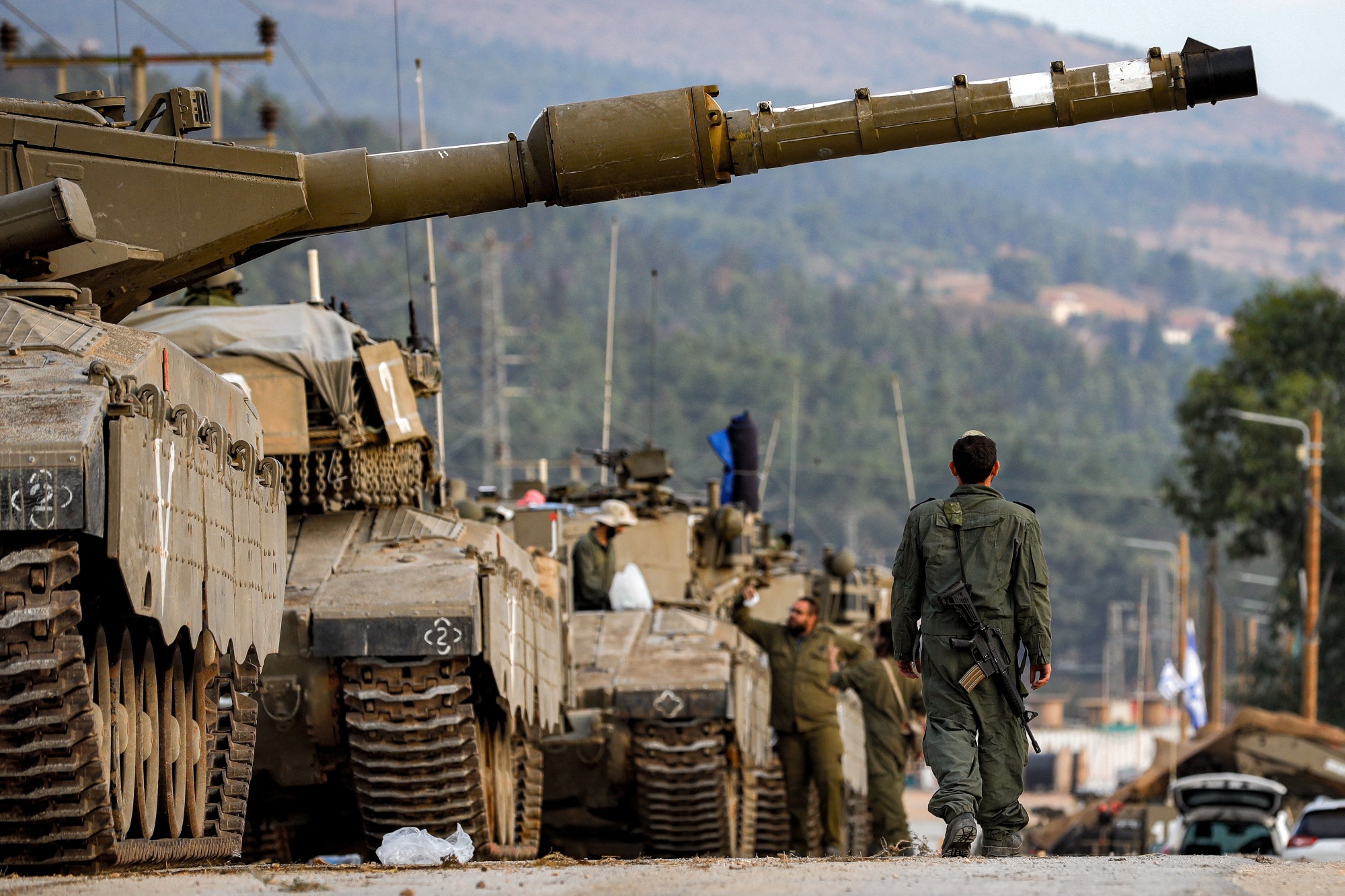
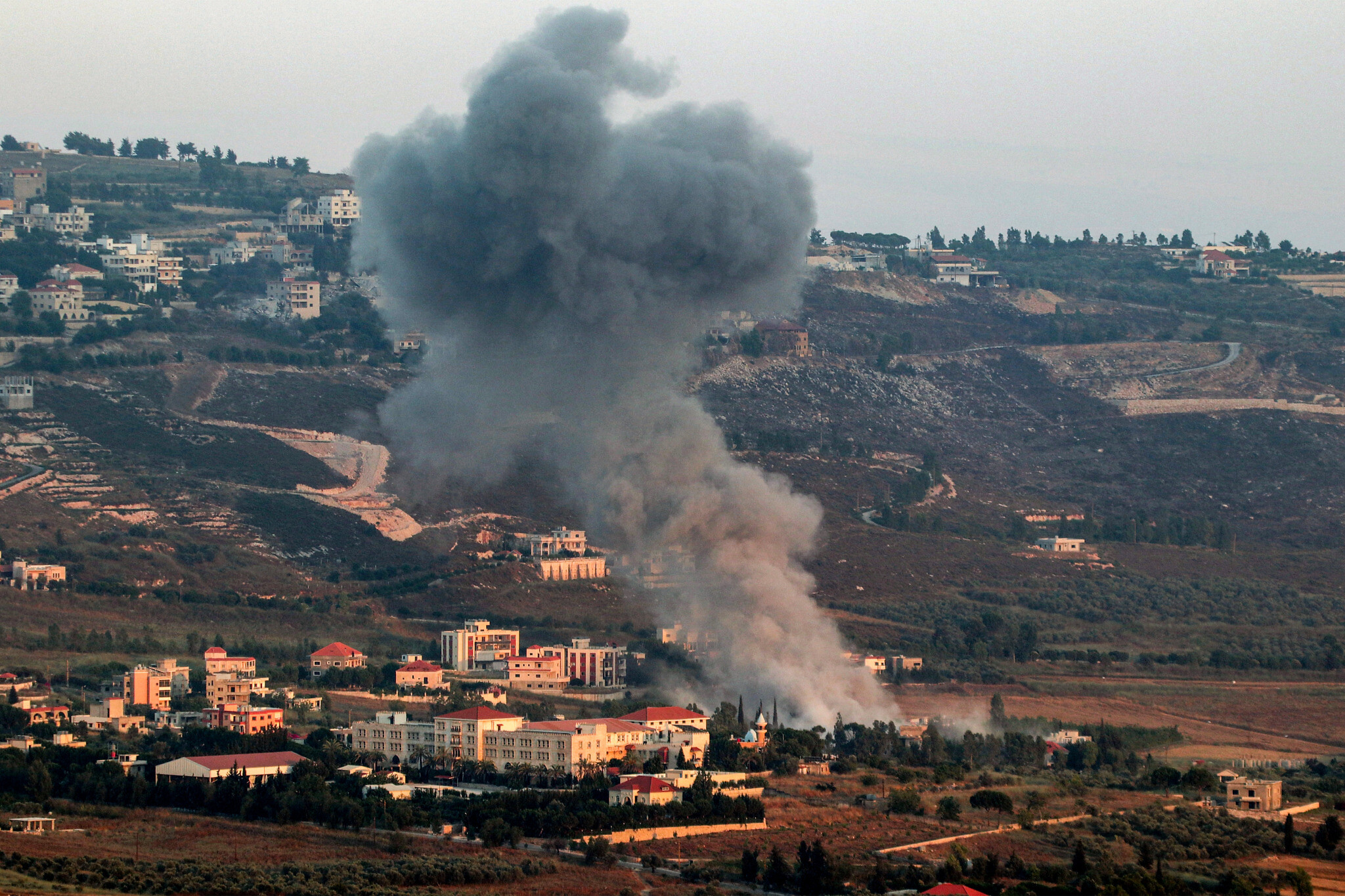
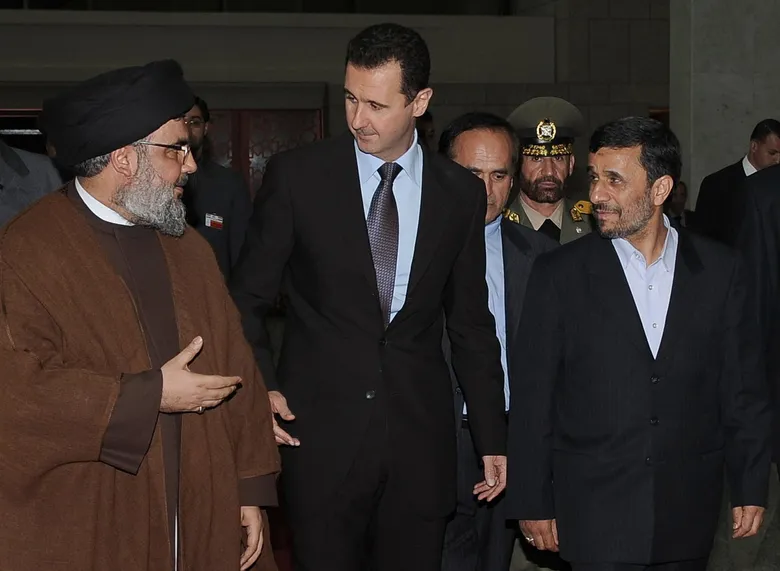
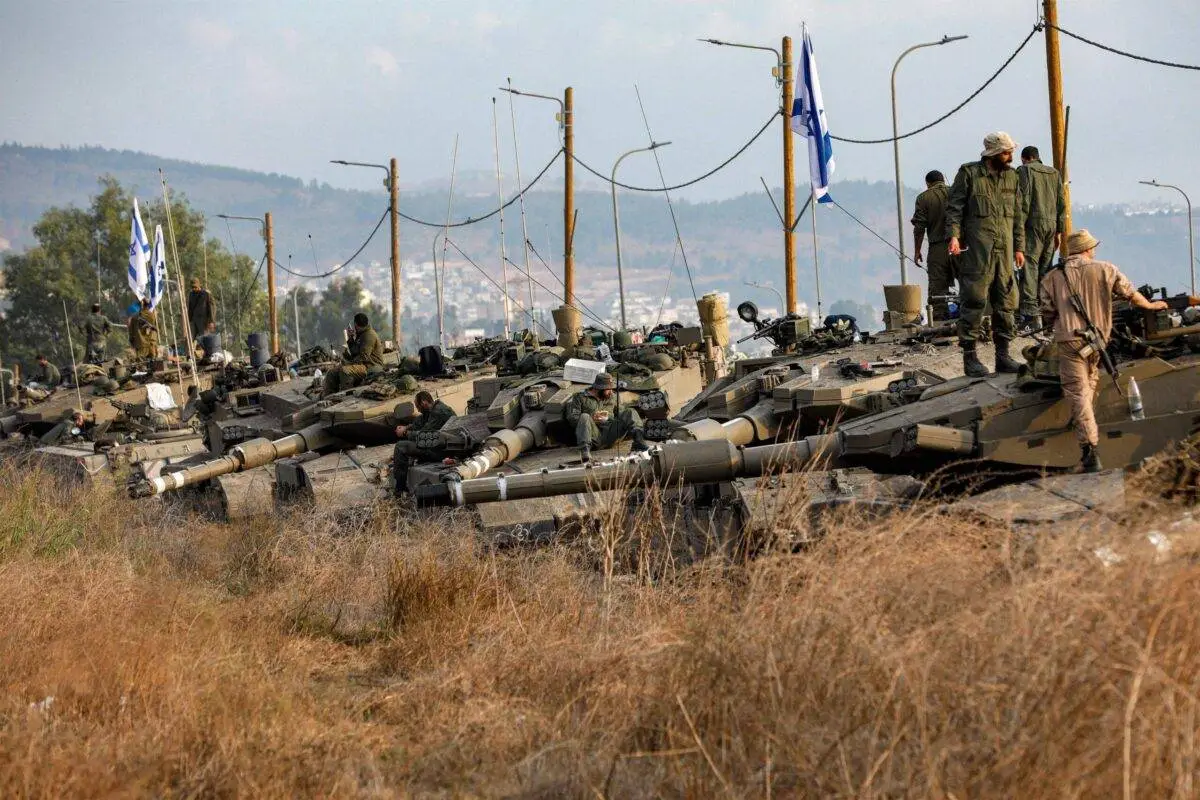





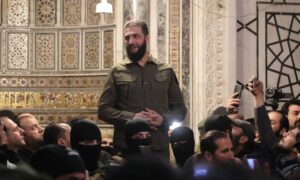
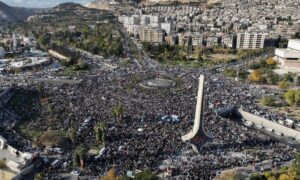
 More In-Depth
More In-Depth